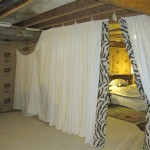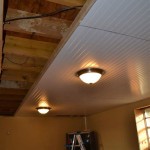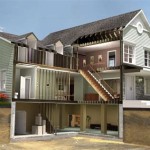Rustic Mountain Home Plans With Walkout Basement: Blending Aesthetics and Functionality
The allure of a rustic mountain home is undeniable. It speaks to a desire for connection with nature, a longing for simpler living, and an appreciation for handcrafted details. When combined with the practicality of a walkout basement, these homes offer a unique blend of aesthetic appeal and functional space, making them a popular choice for homeowners seeking a comfortable and versatile living environment. Rustic mountain home plans with a walkout basement are particularly well-suited for sloping or uneven terrain, allowing for the creation of a level entry on both the main floor and the basement level.
These plans typically incorporate natural materials such as wood, stone, and exposed beams to create a warm and inviting atmosphere. The walkout basement adds valuable square footage that can be used for a variety of purposes, from guest suites and recreation rooms to home offices and workshops. This added space enhances the value and livability of the home, effectively doubling the potential living area without expanding the footprint of the main structure. The access to the outdoors from the basement level further blurs the lines between indoor and outdoor living, a key characteristic of rustic mountain architecture.
The design process for these homes requires careful consideration of the site's topography, climate, and views. The orientation of the home should maximize natural light and minimize exposure to harsh weather conditions. The walkout basement should be integrated seamlessly into the overall design, ensuring that it complements the aesthetic of the main living area. This often involves incorporating natural stone elements into the foundation and exterior walls, and using landscaping to blend the basement level with the surrounding terrain.
Maximizing Space and Functionality with a Walkout Basement
The primary advantage of a walkout basement is the added square footage it provides. This space can be utilized in numerous ways, depending on the homeowner's needs and preferences. It can serve as a self-contained guest suite, complete with a bedroom, bathroom, and kitchenette, providing privacy and comfort for visitors. Alternatively, it can be transformed into a large recreation room, perfect for hosting gatherings or enjoying family time. For those who work from home, a walkout basement can offer a dedicated office space, free from distractions and with direct access to the outdoors.
Another common use for a walkout basement is as a workshop or hobby area. The space is often large and open, providing ample room for projects and equipment. The direct access to the outdoors makes it easy to move materials in and out, and the concrete floors are durable and easy to clean. Additionally, a walkout basement can be used as a storage area, providing a convenient place to store seasonal items, sports equipment, and other belongings. The possibilities are virtually endless, limited only by the homeowner's imagination.
The placement of windows and doors is crucial in a walkout basement. Large windows and sliding glass doors can bring in natural light and provide access to a patio or deck, creating a seamless transition between the indoor and outdoor spaces. Proper insulation is also essential to ensure that the basement is comfortable year-round. This includes insulating the walls, floors, and ceilings, as well as choosing energy-efficient windows and doors. By carefully planning the layout and features of the walkout basement, homeowners can create a valuable and functional space that enhances the overall livability of their mountain home.
Furthermore, the walkout basement can significantly increase the resale value of the property. Potential buyers often appreciate the added living space and the versatility it offers. A well-designed and finished walkout basement can be a major selling point, especially in areas where homes are in high demand.
Incorporating Rustic Design Elements
Rustic mountain home plans are characterized by their use of natural materials, handcrafted details, and connection to the surrounding landscape. Wood is a dominant element, often used for siding, roofing, and interior finishes. Stone is another key material, typically used for foundations, fireplaces, and accent walls. Exposed beams and timber framing are also common features, adding a sense of warmth and character to the home.
The color palette for rustic mountain homes is typically inspired by nature, with earthy tones such as browns, greens, and grays predominating. These colors complement the natural materials used in the construction and create a sense of harmony with the surrounding environment. Interior design often incorporates elements such as reclaimed wood furniture, handcrafted textiles, and vintage accessories, adding to the rustic charm of the home.
Fireplaces are often a focal point in rustic mountain homes, providing warmth and ambiance during the cold winter months. Stone fireplaces are particularly popular, adding a touch of natural beauty to the living space. Large windows and expansive decks are also common features, allowing homeowners to enjoy the stunning views of the surrounding mountains. The goal is to create a home that is both comfortable and aesthetically pleasing, reflecting the beauty and tranquility of the natural world.
Details such as wrought iron hardware, hand-forged lighting fixtures, and custom cabinetry further enhance the rustic character of the home. Attention to detail is crucial in creating a cohesive and authentic design. By carefully selecting materials and finishes, homeowners can create a space that is both beautiful and functional, reflecting their personal style and appreciation for the natural world.
Addressing Site-Specific Considerations
Building a rustic mountain home with a walkout basement requires careful consideration of the site's specific characteristics. The slope of the land, the soil composition, and the climate all play a role in the design and construction process. A geotechnical survey is essential to determine the stability of the soil and to identify any potential hazards, such as landslides or erosion. This information will inform the foundation design and ensure that the home is built on a solid and stable base.
The orientation of the home is also crucial. In colder climates, it is important to orient the home to maximize solar gain during the winter months. This can be achieved by placing large windows on the south-facing side of the home, allowing sunlight to warm the interior spaces. In warmer climates, it is important to minimize solar gain to prevent overheating. This can be achieved by using shading devices such as overhangs, awnings, and trees.
Drainage is another important consideration. Proper drainage is essential to prevent water from accumulating around the foundation and causing damage. This can be achieved by installing gutters, downspouts, and French drains. The landscaping should also be designed to promote proper drainage, with slopes that direct water away from the foundation.
Environmental regulations and building codes must also be taken into account. Many mountain communities have strict regulations regarding building height, setbacks, and environmental protection. It is important to work with a qualified architect or builder who is familiar with these regulations and can ensure that the home is built in compliance with all applicable laws. Sustainability considerations are also increasingly important, with homeowners seeking to minimize their environmental impact and reduce their energy consumption. This can be achieved by using energy-efficient materials, incorporating renewable energy systems, and designing the home to maximize natural light and ventilation. By carefully considering all of these factors, homeowners can create a rustic mountain home with a walkout basement that is both beautiful and sustainable, blending seamlessly with the surrounding environment.
Finally, accessibility should be considered. While a walkout basement provides convenient access to the outdoors, it's important to ensure that the access point is easily navigable for people of all ages and abilities. This might involve installing gentle ramps in addition to or instead of stairs, and ensuring that doorways are wide enough to accommodate wheelchairs or walkers. Thoughtful design can make the walkout basement a truly inclusive space for everyone.

Rustic Mountain House Floor Plan With Walkout Basement Lake Plans Cottage

Rustic Mountain House Floor Plan With Walkout Basement Lake Plans Front

Rustic Mountain House Floor Plan With Walkout Basement

23 Unique Mountain Home Plans With Walkout Basement House Exterior Vintage

Rustic Mountain House Floor Plan With Walkout Basement Lake Plans Loft

Rustic Mountain House Floor Plan With Walkout Basement

Rustic Mountain House Floor Plan With Walkout Basement

Rustic Mountain House Floor Plan With Walkout Basement Plans Ranch Style

Plan 51854 Mountain House With Walkout Basement

House Plan 3 Bedrooms 2 Bathrooms 3998 Drummond Plans







